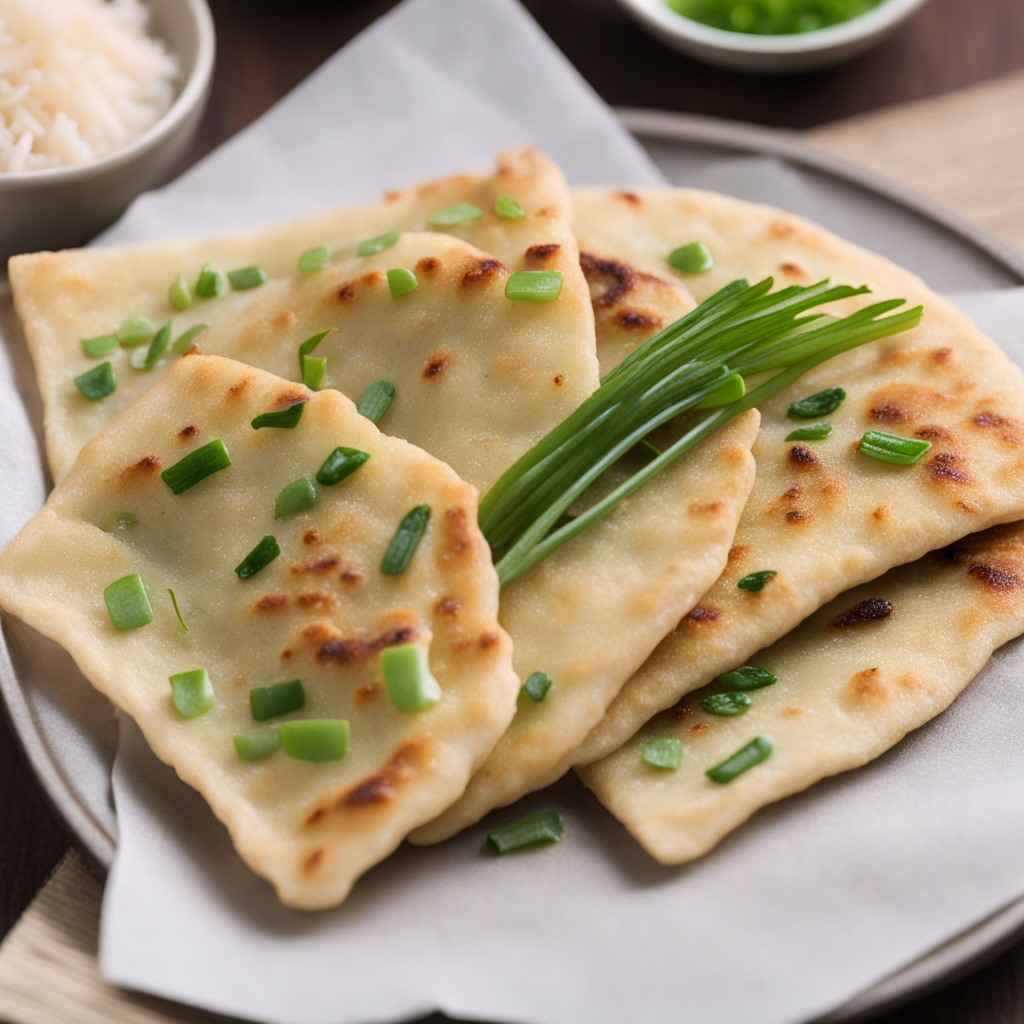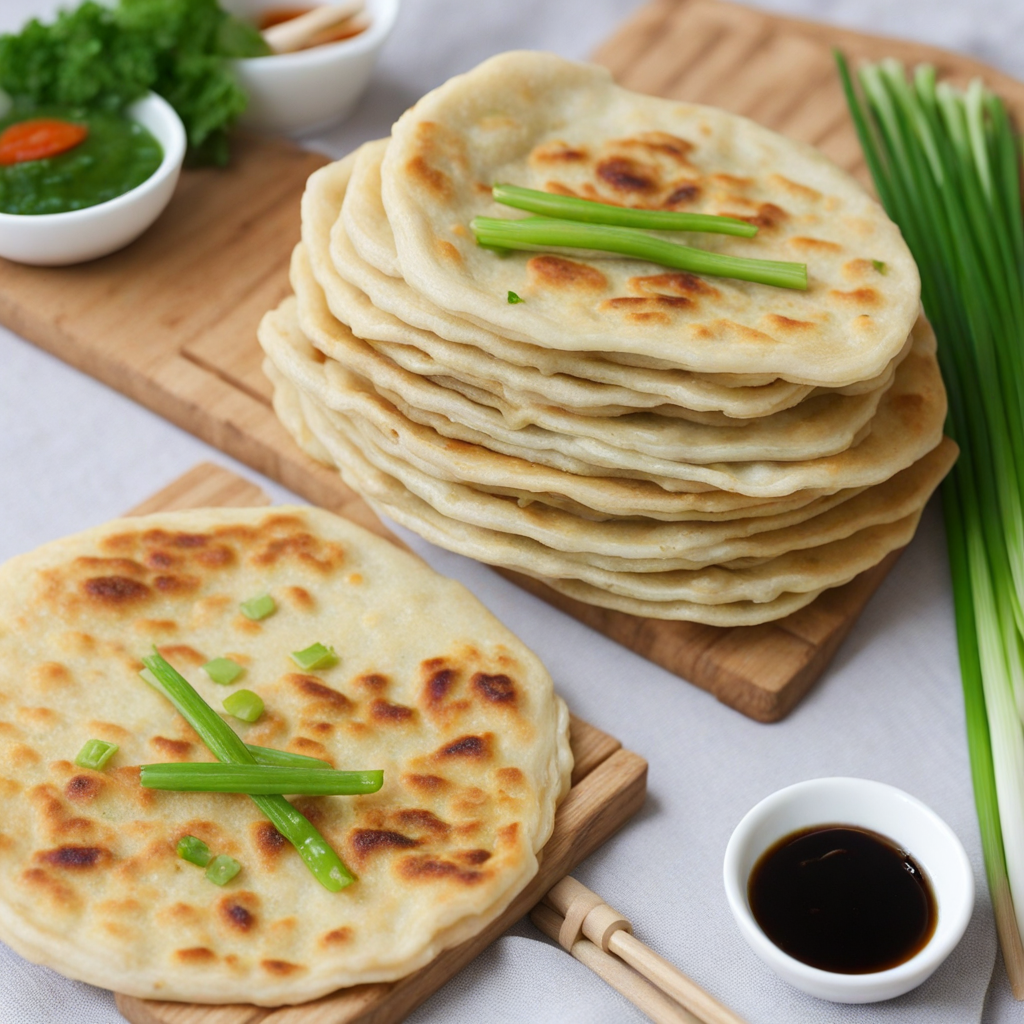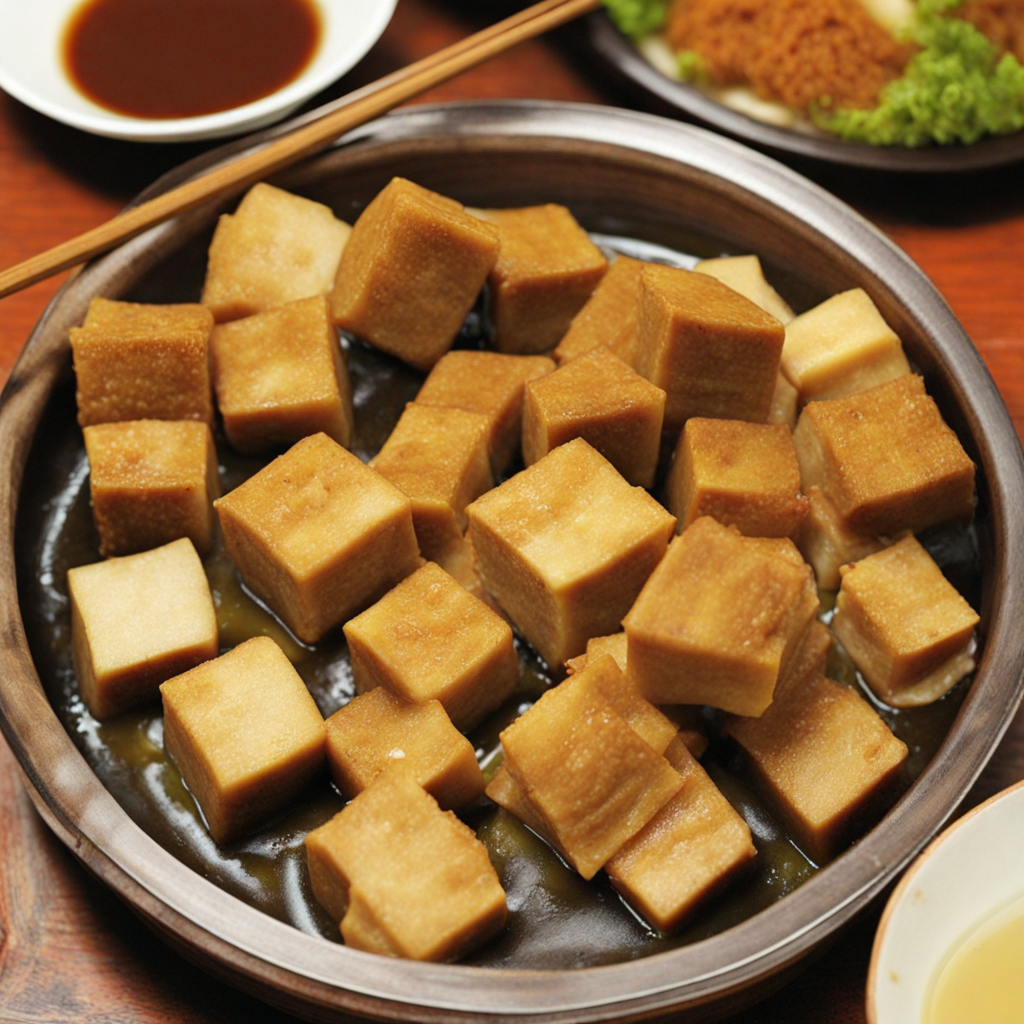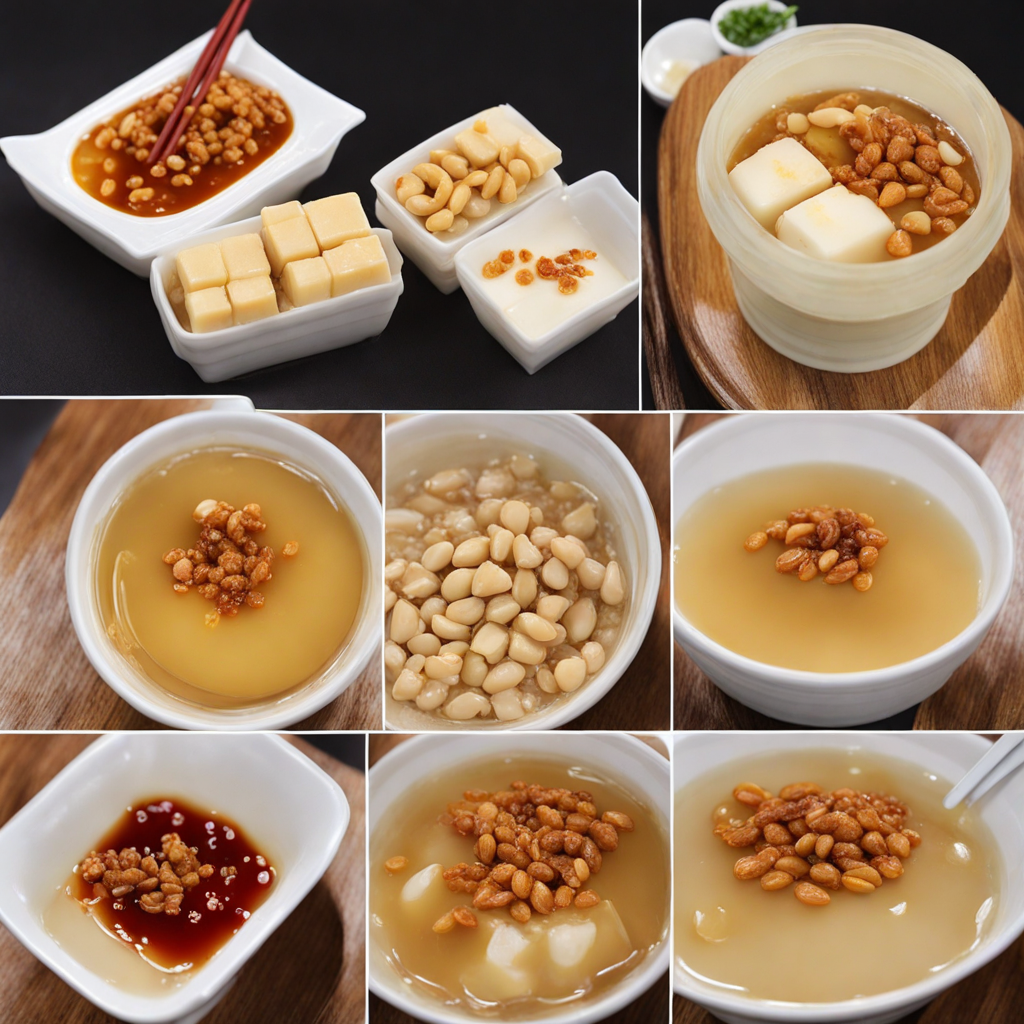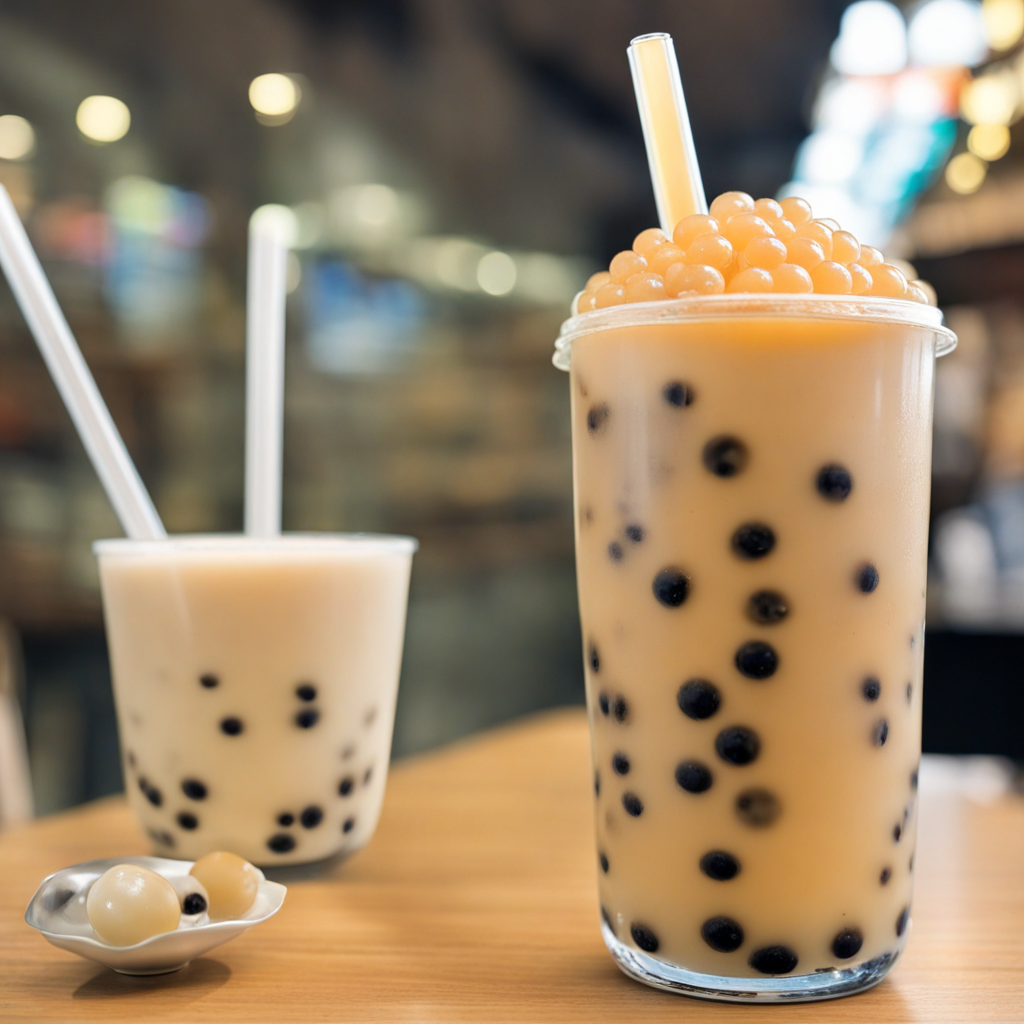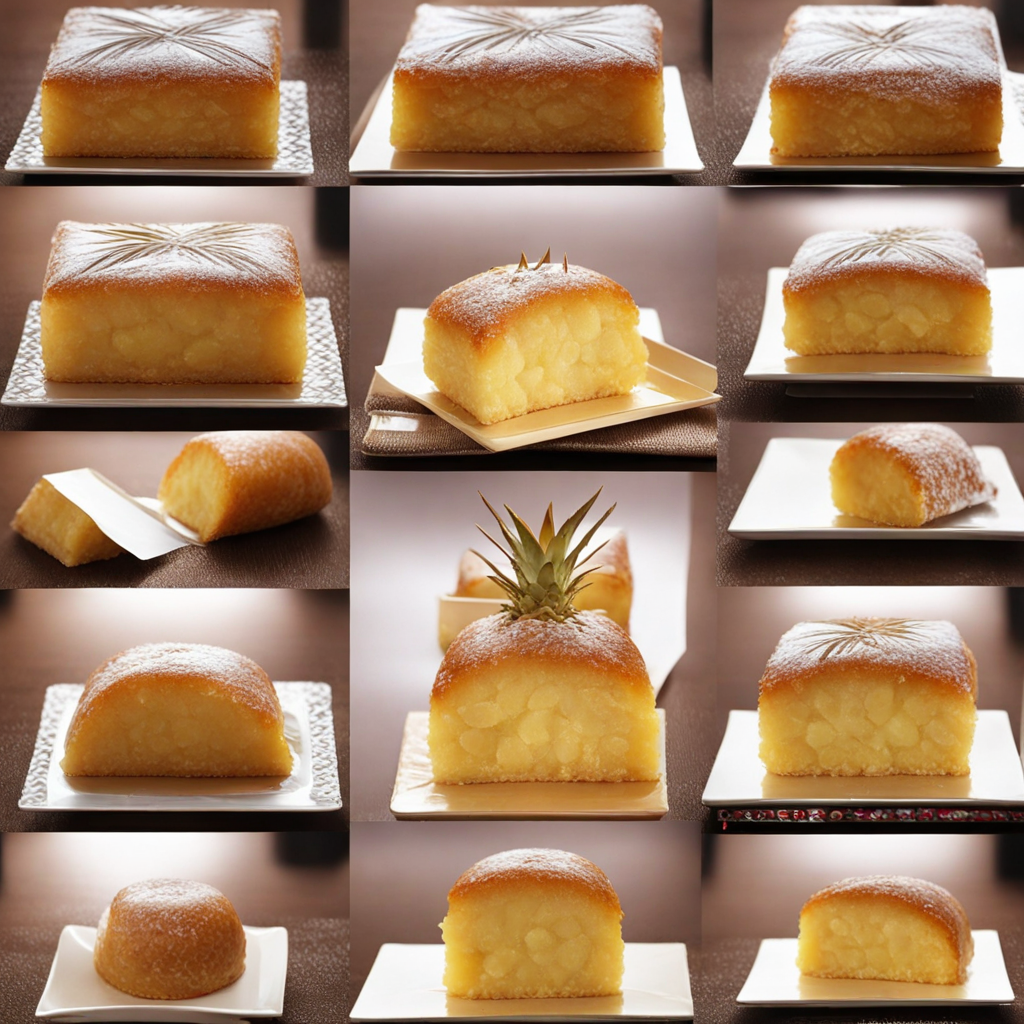Scallion Pancake
Scallion pancakes, or "Cong You Bing" in Mandarin, are a beloved Taiwanese street food that embodies the perfect balance of texture and flavor. These savory pancakes are made from a simple dough of wheat flour mixed with water, which is then rolled out and generously layered with finely chopped scallions. The process of rolling and folding the dough creates a flaky, crispy outer layer that gives way to a tender, chewy interior, making every bite a delightful experience. The scallions not only add a fresh, aromatic quality but also contribute a subtle sweetness that complements the richness of the pancake. When cooked, scallion pancakes develop a golden-brown crust, enticing with their aroma as they sizzle in a hot pan. Traditionally, they are pan-fried until perfectly crispy, resulting in a satisfying crunch that contrasts beautifully with the soft, flavorful layers inside. Often served with a soy-based dipping sauce, the pancakes offer a wonderful umami flavor that enhances their natural taste. The combination of textures and flavors makes scallion pancakes an addictive snack or appetizer that can be enjoyed at any time of day. Scallion pancakes are not just a treat for the palate; they also embody the cultural essence of Taiwanese cuisine. They are often found at night markets and local eateries, where vendors skillfully prepare them right before your eyes. Enjoying a warm scallion pancake straight from the pan, with its steam wafting up and the aroma of fresh scallions, creates a sensory experience that captures the heart of Taiwanese street food culture. Whether you're exploring the streets of Taiwan or trying your hand at making them at home, scallion pancakes promise a delicious journey into the world of Taiwanese flavors.
How It Became This Dish
The History of 蔥油餅 (Scallion Pancakes) in Taiwan 蔥油餅, pronounced "cōng yóu bǐng," translates to "scallion oil pancakes" in English. This delightful flatbread is a beloved staple in Taiwanese cuisine, yet its origins are deeply rooted in a broader culinary tradition that spans several regions of Asia. The story of scallion pancakes is one of cultural exchange, adaptation, and regional pride, reflecting the diverse tapestry of flavors that characterize Taiwanese gastronomy. #### Origins: A Culinary Confluence The scallion pancake is thought to have originated in China, with some historical references tracing its existence back to the Tang Dynasty (618–907 AD). During this era, various forms of flatbreads were prevalent, often made from wheat flour and flavored with an array of ingredients. Scallions, or green onions, were commonly used for their aromatic qualities and added flavor, leading to the development of a pancake-like dish. As the centuries progressed, scallion pancakes evolved through regional variations across China. The most notable versions can be found in northern China, particularly in Beijing, where they are known as "cong you bing." These pancakes are typically thicker and have a more robust texture, often served as a street food item. The popularity of scallion pancakes spread through migration and trade, reaching Taiwan during the waves of Chinese immigration in the late 1940s, particularly after the Chinese Civil War. #### Cultural Significance in Taiwan In Taiwan, 蔥油餅 became a symbol of the island's culinary identity, blending influences from both Chinese and local Taiwanese cultures. The dish is commonly found in night markets, street stalls, and family kitchens, cherished for its crispy exterior, chewy interior, and rich flavor profile. It is often served as a breakfast item, snack, or side dish, highlighting its versatility and widespread appeal. The cultural significance of 蔥油餅 in Taiwan extends beyond mere sustenance. It represents a sense of comfort and nostalgia for many Taiwanese people, evoking memories of family gatherings and shared meals. The act of preparing these pancakes can also be a familial bonding experience, as families often come together to create the dough, roll it out, and fry the pancakes, passing down techniques and recipes through generations. #### Preparation and Ingredients The traditional preparation of 蔥油餅 involves a few key ingredients: all-purpose flour, water, salt, and, of course, scallions. The dough is kneaded until smooth, then rolled out and layered with finely chopped scallions and oil, creating a spiral before being flattened again. The pancakes are then pan-fried until they achieve a golden-brown crust, resulting in a crispy texture that contrasts beautifully with the soft, chewy interior. In recent years, there has been an explosion of creativity regarding the fillings and variations of 蔥油餅. Some vendors incorporate additional ingredients such as sweet potato, cheese, or even curry, allowing for personalized flavors that cater to different palates. The adaptability of the dish has kept it relevant in Taiwan’s ever-evolving food landscape, appealing to both traditionalists and modern food enthusiasts alike. #### Evolution Over Time As Taiwan's culinary scene has matured, 蔥油餅 has undergone several transformations. In the late 20th century, the rise of night markets became a critical aspect of Taiwan's food culture. These bustling hubs of activity not only showcased local delicacies but also provided a platform for street food vendors to innovate. The popularity of 蔥油餅 surged during this time, with many vendors perfecting their own recipes and techniques, each contributing to the diverse offerings available to consumers. In the 21st century, the globalization of food culture has further impacted 蔥油餅. The dish has transcended the boundaries of Taiwan, finding its way into international food markets and restaurants around the world. In cities with significant Taiwanese populations, such as Los Angeles, New York, and Vancouver, 蔥油餅 has become a sought-after dish, celebrated for its unique texture and flavor. As a result, Taiwanese food culture has gained recognition and appreciation on a global stage, with 蔥油餅 as one of its iconic representatives. #### Contemporary Significance Today, 蔥油餅 continues to be a cherished culinary delight in Taiwan, symbolizing the island's rich heritage and cultural identity. The dish is often featured in food festivals and culinary events, where chefs showcase their skills and creativity. The rise of social media platforms has also contributed to the dish's visibility, with food bloggers and influencers highlighting various interpretations and serving suggestions. Moreover, the dish serves as a reminder of Taiwan's complex history and the resilience of its culinary traditions. In an era marked by globalization and rapid change, 蔥油餅 stands as a testament to the importance of preserving cultural heritage while embracing innovation. The dish embodies the spirit of Taiwan—dynamic, diverse, and delicious. #### Conclusion 蔥油餅 is more than just a simple pancake; it is a culinary emblem of Taiwan's history, culture, and adaptability. From its origins in ancient China to its modern-day iterations in night markets and global kitchens, this dish has evolved while maintaining its core identity. As Taiwan continues to navigate the complexities of modernity and tradition, 蔥油餅 remains a delicious reminder of the island's rich past and a hopeful symbol for its future. Whether enjoyed at a bustling night market or made at home with loved ones, the humble scallion pancake carries with it stories of connection, nostalgia, and the joy of sharing a meal.
You may like
Discover local flavors from Taiwan


